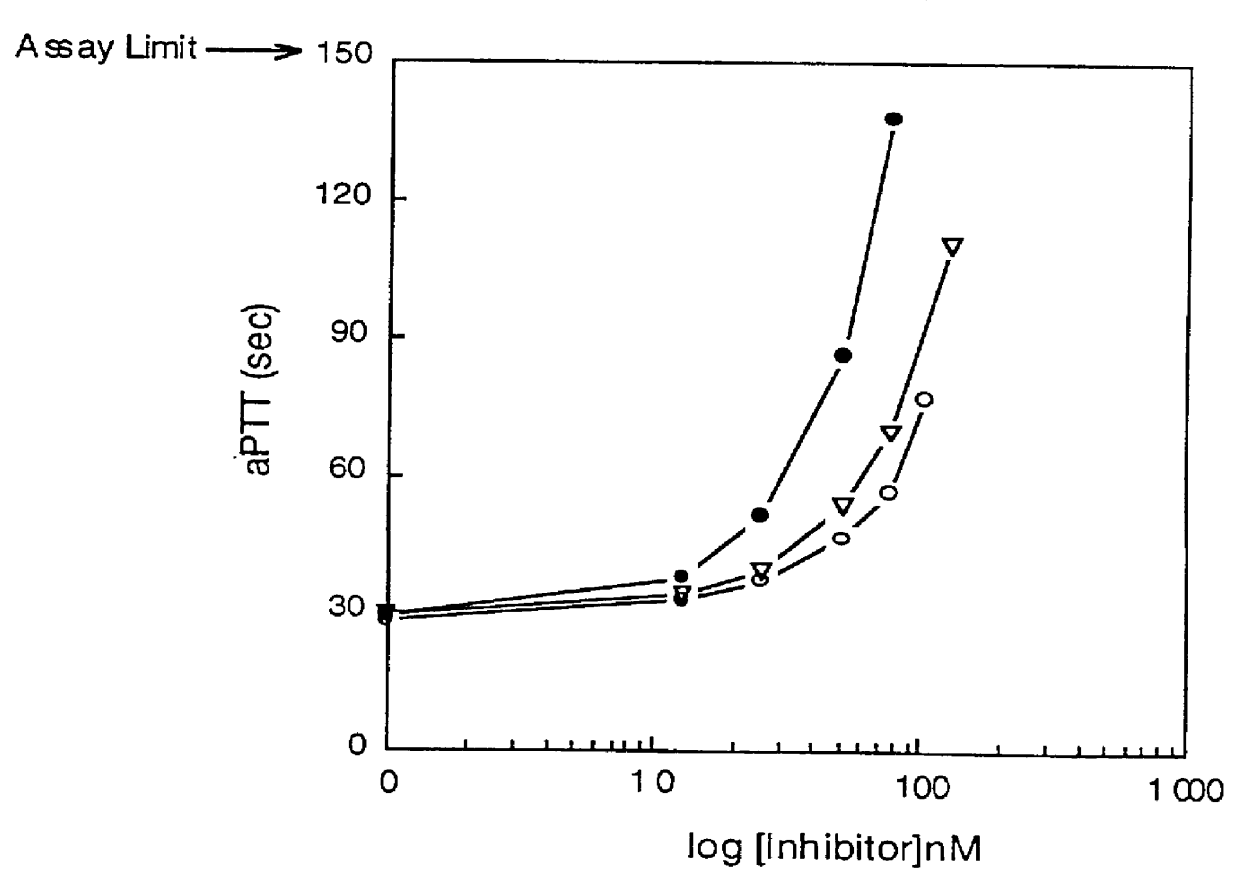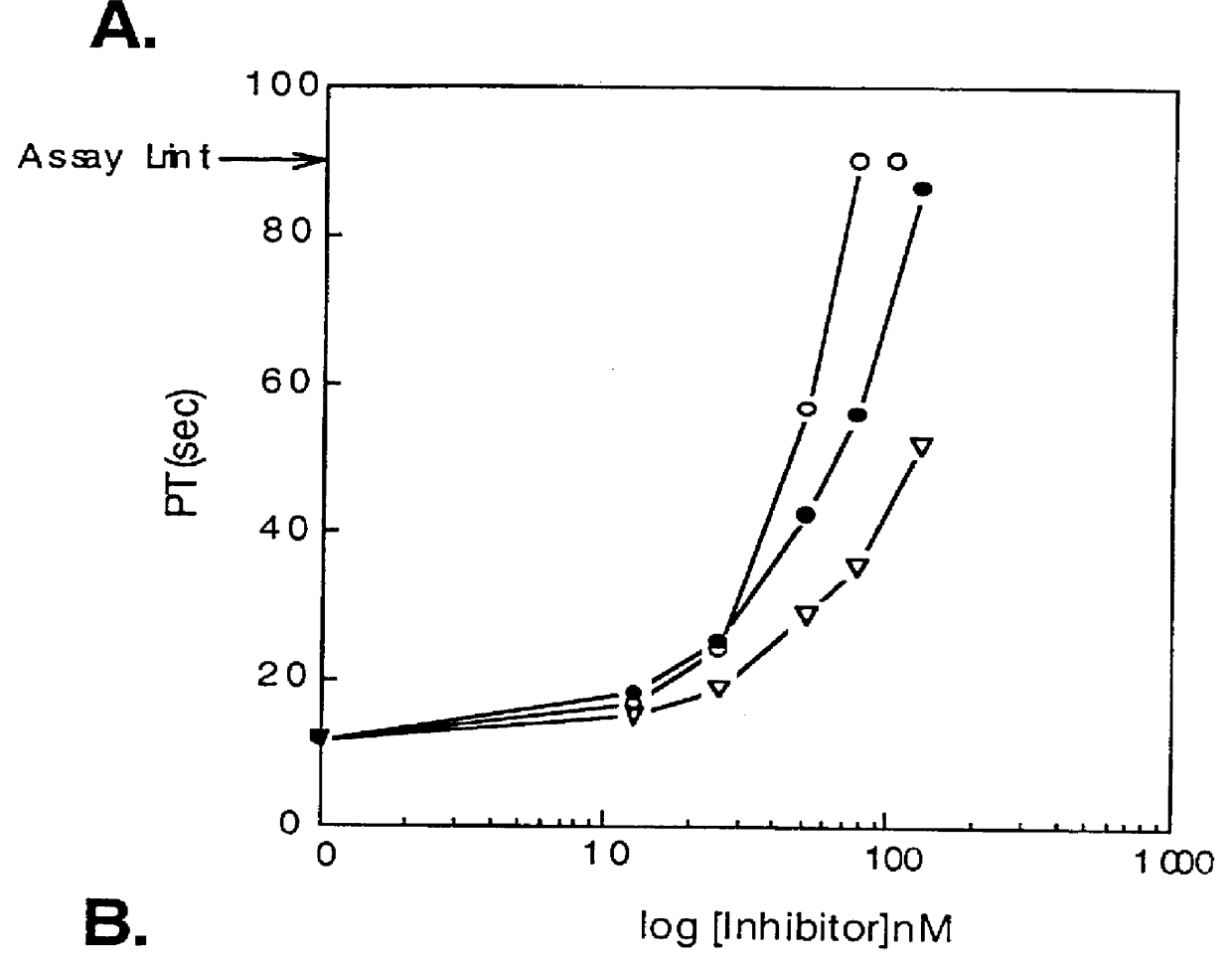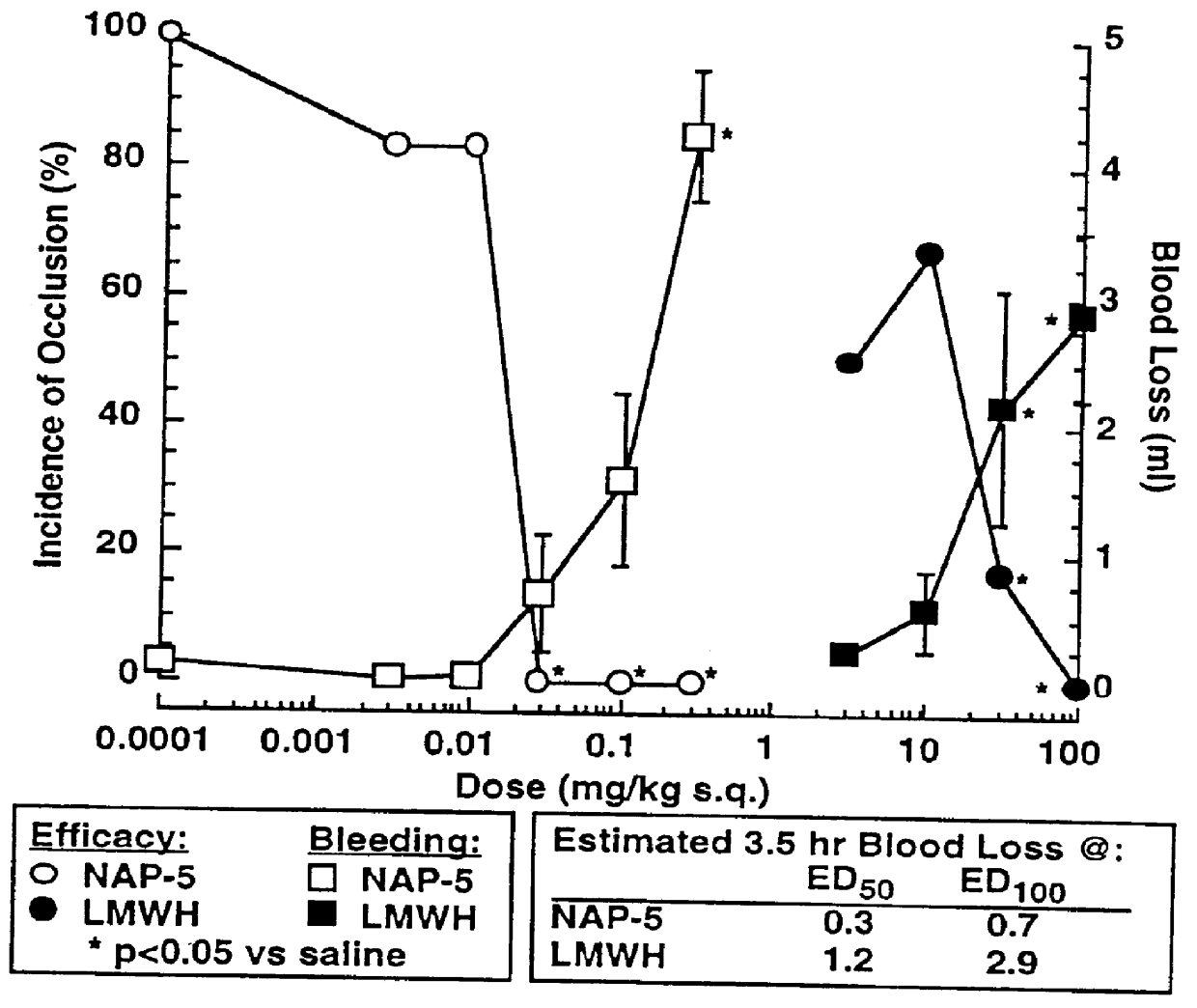Nematode-extracted serine protease inhibitors and anticoagulant proteins
a protease inhibitor and serine technology, applied in the field of nematode-extracted serine protease inhibitors and anticoagulant proteins, can solve the problems of reducing or complete lack of blood flow to the affected organ, increasing the time required to achieve a certain amount of clotting, and increasing the time required to achieve clotting. , to achieve the effect of increasing the time, increasing the time required, and facilitating feeding
- Summary
- Abstract
- Description
- Claims
- Application Information
AI Technical Summary
Benefits of technology
Problems solved by technology
Method used
Image
Examples
example 1
Isolation of Novel Anticoagulant Protein (NAP) from Ancylostoma caninum
(A) Preparation of the Ancylostoma caniumum Lysate.
Frozen canine hookworms, Ancylostoma caninum, were obtained from Antibody Systems (Bedford, Tex.). Hookworms were stored at -80.degree. C. until used for homogenate.
Hookworms were frozen in liquid nitrogen and ground in a mortar followed by a homogenization on ice in homogenization buffer using a PotterS homogenizer with a teflon piston (B.Braun Melsungen AG, Germany). The homogenization buffer contained: 0.02 M Tris-HCl pH 7.4, 0.05 M NaCl, 0.001 M MgCl.sub.2, 0.001 M CaCl.sub.2, 1.0.times.10.sup.-5 M E-64 protease inhibitor (Boehringer Mannheim, Germany), 1.0.times.10.sup.-5 M pepstatin A (isovaleryl-Val-Val-4-amino-3-hydroxy-6-methyl-heptanoyl-Ala-4-amino-3-hydroxy-6-methylheptanoic acid, ICN Biomedicals, CA), 1.0.times.10.sup.-5 M chymostatin (Boehringer), 1.0.times.10.sup.-5 M leupeptin (ICN), 5.times.10.sup.-5 M AEBSF (4-(2-aminoethyl)-benzenesulfonyl fluor...
example 2
Cloning and Sequencing of NAP from Ancylostoma caninum
(A) Preparation Of Hybridization Probe.
Full-length cDNA clones encoding NAP were isolated by screening a cDNA library, prepared from the mRNA isolated from the nematode, Ancylostoma caninum, with a radiolabeled degenerate oligonucleotide whose sequence was based on the first eleven amino acids of the amino-terminus of NAP from A. caninum:
Lys Ala Tyr Pro Glu Cys Gly Glu Asn Glu Trp [SEQ. ID. NO. 93].
The 33-mer oligonucleotide hybridization probe, designated YG99, had the following sequence:
AAR GCi TAY CCi GAR TGY GGi GAR AAY GAR TGG [SEQ. ID. NO. 94]
where "R" refers to A or G; "Y" refers to T or C; and "i" refers to inosine. YG99 was radiolabeled by enzymatic 5'-end phosphorylation (5'-end labeling kit; Amersham, Buckinghamshire, England) using gamma-.sup.32 P-ATP (specific activity >7000 Ci / mmole; ICN, Costa Mesa, Calif., USA) and subsequently passed over a NAP.TM.10 column (Pharmacia, Uppsala, Sweden).
(B) Preparation of cDNA Lib...
example 3
Production and Purification Of Recombinant AcaNAP5 In P. pastoris
(A) Expression Vector Construction.
The Pichia pastoris yeast expression system, including the E. coli / P. pastoris shuttle vector, pHILD2, has been described in a number of United States Patents. See, e.g., U.S. Pat. Nos. 5,330,901; 5,268,273; 5,204,261; 5,166,329; 5,135,868; 5,122,465; 5,032,516; 5,004,688; 5,002,876; 4,895,800; 4,885,242; 4,882,279; 4,879,231; 4,857,467; 4,855,231; 4,837,148; 4,818,700; 4,812,405; 4,808,537; 4,777,242; and 4,683,293.
The pYAM7SP8 vector used to direct expression and secretion of recombinant AcaNAP5 in P. pastoris was a derivative of the pHILD2 plasmid (Despreaux, C. W. and Manning, R. F., Gene 131: 35-41 (1993)), having the same general structure. In addition to the transcription and recombination elements of pHILD2 required for expression and chromosomal integration in P. pastoris (see Stroman, D. W. et al., U.S. Pat. No. 4,855,231), this vector contained a chimeric prepro leader sequ...
PUM
| Property | Measurement | Unit |
|---|---|---|
| molecular weight | aaaaa | aaaaa |
| molecular weight | aaaaa | aaaaa |
| molecular weight | aaaaa | aaaaa |
Abstract
Description
Claims
Application Information
 Login to View More
Login to View More - R&D
- Intellectual Property
- Life Sciences
- Materials
- Tech Scout
- Unparalleled Data Quality
- Higher Quality Content
- 60% Fewer Hallucinations
Browse by: Latest US Patents, China's latest patents, Technical Efficacy Thesaurus, Application Domain, Technology Topic, Popular Technical Reports.
© 2025 PatSnap. All rights reserved.Legal|Privacy policy|Modern Slavery Act Transparency Statement|Sitemap|About US| Contact US: help@patsnap.com



